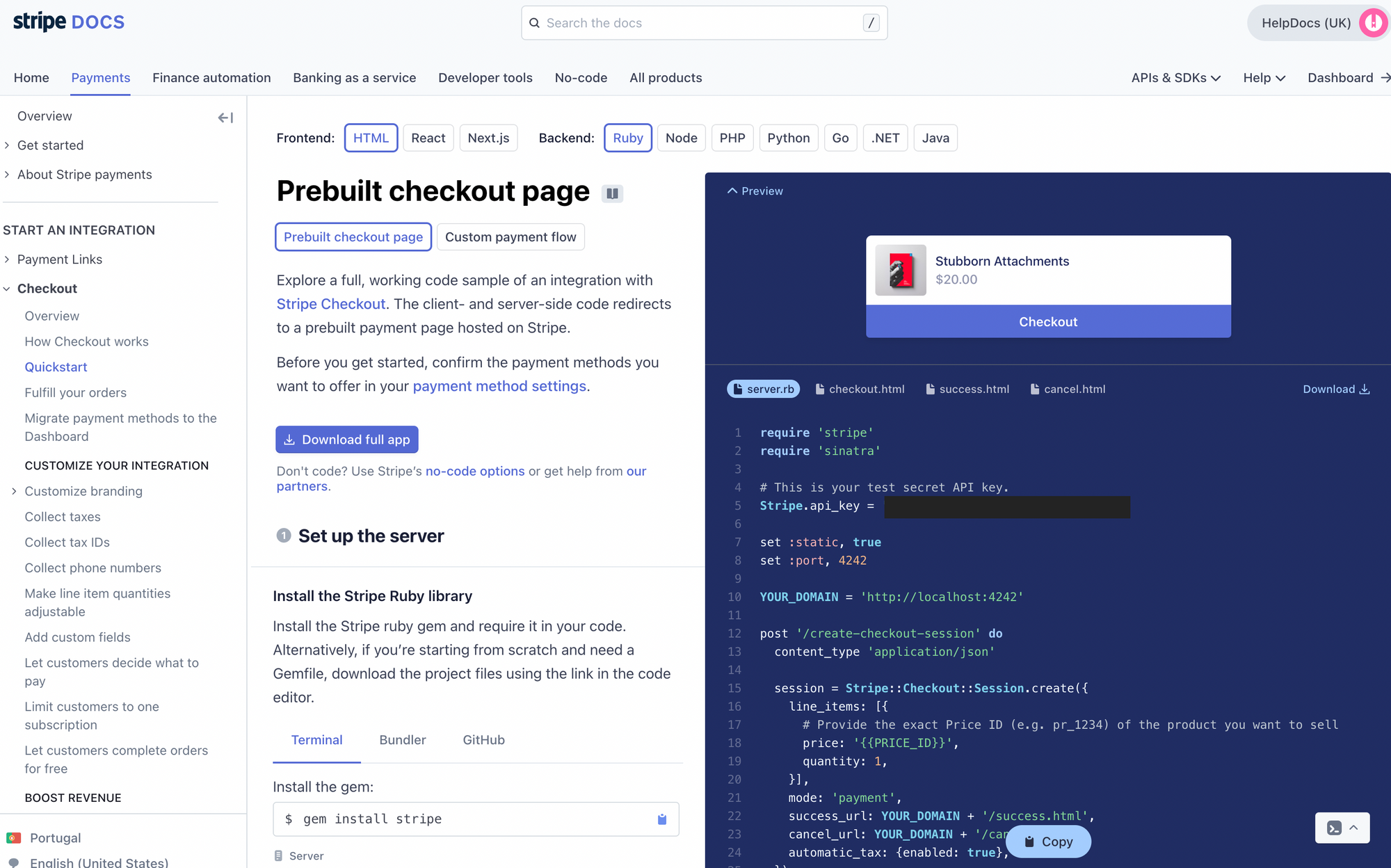
Ever feel like your Knowledge Base could use an extra boost to be amazing? Following best practices might be the way to go.
Not only will best practices make your self-serve help more consistent, but they'll give you a list to check off to make sure it's the best it can be 💅
I know you're probably juggling more tasks than a circus performer on caffeine. That's where a slick, digitally tricked-out Knowledge Base swoops in to save the day.
From improving productivity to boosting customer satisfaction, a thoughtfully designed and well-crafted knowledge base can do it all.
The operative terms here are thoughtfully designed and well crafted.
Anything short of that would be a haphazard, confusing, shoddy mess of information that is useful to nobody.
Read on and follow along because we're about to journey through the most effective and hard-to-ignore Knowledge Base best practices.
Create a User-Friendly Knowledge Base with a User-Friendly Interface
One of the key benefits of creating a Knowledge Base is getting your employees or customers to find information for themselves.
Think of it as a self-serve employee or customer service library. Or a tool to educate your customers, proactively provide support, and improve employee success and understanding.
A user-friendly Knowledge Base will provide a great user experience. But how can you create one that is user-friendly?
It all starts with the interface. Here are a few tips:
- Ensure that the interface is easy for creators and users alike. That means accessible to as many users as possible
- Empower users by providing them with a navigation system so intuitive it's like a walk in the park
- Predictability is critical. Make choices regarding layouts as reliable as your favorite socks for maximum efficiency and satisfaction
- Keep things consistent by ensuring all UI elements are cohesive
- Use typography to create a visual hierarchy that's so clear it's practically shouting "This is important!"
- Get creative with color, light, contrast, and texture to effortlessly guide attention to the good stuff and away from the not-so-good stuff. Having said that, don't go wild with too many colors. A good rule is two base colors and another to highlight critical elements.
Ensure Your Knowledge Base is Easy to Read
Your Knowledge Base articles should be edited for clarity so they don't sound like a random train of thought you'd have with a friend.
Think about what your readers expect from your Knowledge Base articles.
Are they looking to learn more about your product (curiosity)? Are they trying to solve a problem (frustration)? You should adjust your tone and content accordingly.
Adding a touch of humor to non-troubleshooting articles is okay, but be careful not to annoy your readers. Consider their frame of mind when they read your Knowledge Base and write for that situation.
Avoid slang and words with double meanings. Trim away fluff and get straight to the point. Use tools like Grammarly to help you with that.
Encourage consistency by creating a Knowledge Base style guide. Your voice and tone should be a big part of this.
Organize Content in a Meaningful Way
Creating a Knowledge Base is not about dumping information or content in a repository and expecting your users to search through that chaos until they find what they want.
Proper Knowledge Base organization is critical. You don't want your users looking for a needle in a haystack when it comes to finding the most useful article.

Starting your Knowledge Base from Scratch?
Check out our comprehensive guide that'll get you from zero to publishing hero in no time 💖
A well-designed hierarchy can help readers find the exact information they require quickly and easily. It can also make maintaining and updating your content easier over time. The structure you choose should make sense to your users.
Identify main topics/categories relevant to your customers. For example:
- FAQs
- Troubleshooting
- Product Features
- Best Practices
- Getting Started (with a product or service)
Then break each main category into subcategories. For example, subcategories for an FAQ category could include:
- Billing and Payment
- General Questions
- Technical Issues
- Account Management
Break down each subcategory further into subcategories(es?). For example, FAQs > > Billing and payment subtopics could include:
- Billing Cycle and Invoicing
- Payment Options and Methods
- Refunds and Cancellations
When arranging topics start with the primary and most accessible concepts before moving on to the more complex topics in a subcategory.
Add related articles at the end of each article to make searching for related or additional information easier for your customers.
Channel your inner customer and arrange the Knowledge Base in a way that makes them go "Wow, they totally get what I'm looking for!".
Finally remember to put the correct articles in the relevant sections to help your users find what they need quickly.
Clear and Concise Information
Knowledge is power but clarity is royalty 🫅
In the fast-paced digital era attention spans are shorter than a politician's memory (or Liz Truss' term 🫳🎤).
Users want answers and they want them now. Complex, convoluted information can quickly overwhelm and frustrate them. So K.I.S.S. (Keep it short and simple) and:
- Trim the fat: Identify and remove redundant or obsolete information cluttering up your articles and causing confusion. Streamline the content to ensure it's relevant, concise, and easy to digest
- Bust the jargon: Ah, the land of jargon, where simple questions get lost amidst a maze of buzzwords and acronyms. Break free from this linguistic prison and opt for plain language instead. Remember, clarity is royalty—the less time your readers spend scratching their heads, the more time they have to praise your brilliant Knowledge Base
- Banish the fluff: When it comes to knowledge sharing, excessive fluff can do more harm than good. Avoid long-winded introductions—get straight to the point. Use clear, straightforward language that even your neighbor's dog can understand. Let's keep it snappy!
And if you just have so much information to share in one article then use elements that make this process easier.
Make Use of Multimedia and Visual Aids
Humans can respond to and process visual data way better than any other data type (including text). It makes sense to support your Knowledge Base's written content with high-quality images, videos, and multimedia like sounds, animations, and interactivity.
Visual aids and multimedia can increase your credibility and authority as a digital communicator.
They also emphasize and reinforce critical points by drawing your audience's attention. Complex ideas can be explained easily through visuals because they are easier to process and understand.
There are loads of multimedia and visual aids that you can use—like photos, diagrams, graphs, charts, icons, videos, slideshows, podcasts, infographics, and interactive games. But just because you have a variety doesn't mean you've got to use all of them.

Selecting the perfect visual aids and multimedia is crucial. Choose wisely based on your objectives, target audience, and preferred channel.
Consider your message, the audience's desires, and the ideal format and platform for your digital communication.
Lastly, ensure you have enough time and resources to create and present your amazing visuals. Let your visual aids speak volumes!
Keep Your Knowledge Base Up to Date
Neglecting your content and keeping your Knowledge Base unchanged is like maintaining the same haircut since high school.
It's unappealing, out of style, and screams for an update (are bowl cuts in fashion again? 🤔).
Treat your Knowledge Base like your hairstyle and ensure it's hip and relevant. Be a proactive curator of your documentation to cater to your customers' needs.
Rolling out new features? Remember to create new articles for your Knowledge Base. Avoid repetition like the plague. Hyperlink to relevant articles instead, so updating becomes a breeze.
You can scale your knowledge base quickly if you strategically organize and categorize your content.
Are you hiring new writers to help you update your content? Keep the language consistent and establish formatting guidelines to maintain a professional touch—that way, your customers will always know what to expect from your knowledge base.
Invite Feedback from Your Knowledge Base Users
The most valuable resource for your Knowledge Base is the articles it contains. The quality of your help is only as good as the quality of your articles—who better to judge those articles than those who read them?
Invite your customers to submit feedback on your Knowledge Base articles so you have insight into where to improve your documentation.
The article feedback feature—a part of most Knowledge Base software—is a super easy way for your authors to receive feedback from readers. They can comment, critique, and share their thoughts, helping you spot any areas that need improvement.
You can also get your customers to rate your Knowledge Base articles' usefulness on a scale. Then you can refine each article to contain the exact information they need.
Customer Analytics Tools
With customer analytics features, organizations can dive into a treasure trove of data to see which articles customers gobbled up like candy and which left them scratching their heads.
And that's not all—these savvy tools even track the nifty keywords customers use in their searches. So why is all this data important? It's like having a cheat sheet to upgrade your knowledge base content game.
Suppose the numbers reveal that customers are frantically searching for a topic your Knowledge Base shamefully neglects. In that case you can whip up articles on those topics—continually improve your knowledge base and better meet the needs of your users.
And if you did write an article but it didn't come up in the results? It's time to juggle those keywords so they do come up on top in the future.
Conclusion
There you have it—Knowledge Base best practices you probably shouldn't ignore.
It's crucial to build a platform that is user-friendly and easy to navigate. The value of having readable content organized in a clear and concise way cannot be overlooked.
A blend of multimedia and visual aids can captivate your readers, but it's also important to consistently update your content.
Use your users' feedback and the analytics feature in your knowledge information management software to better your Knowledge Base user experience and help you continue creating the content they need.